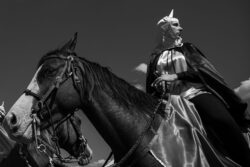Spring 2023
Tournoi de la Ville Platte
Defending the cotton crop with old-fashioned horsemanship
Published: February 28, 2023
Last Updated: June 1, 2023
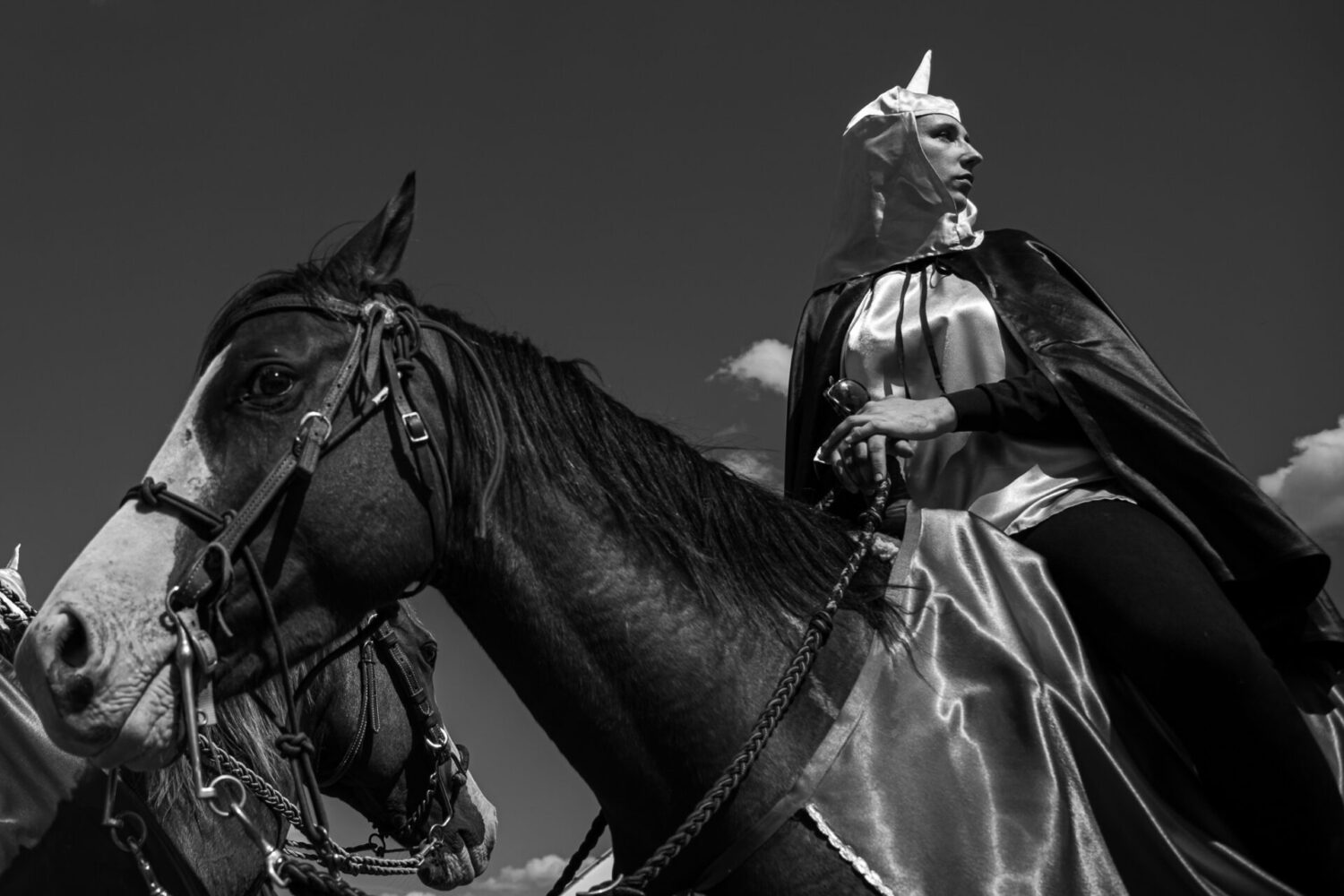
In 2021 French native Marie Toustou became the fourth woman to qualify for the tournoi. In 2022 Toustou received the Tournoi Sportsmanship Award.
This event—the Tournoi de la Ville Platte—arrived in Louisiana in the early nineteenth century via France, Toustou learned, but neither she nor any of her French friends or relatives had ever heard of it. According to local legend, Marcellin Garand, an officer under Napoleon, brought the race to Louisiana, where it ceased in the late 1880s. It returned in 1953 and has run annually since. Through her research and participation, Toustou discovered a competition as fierce as any professional sport.
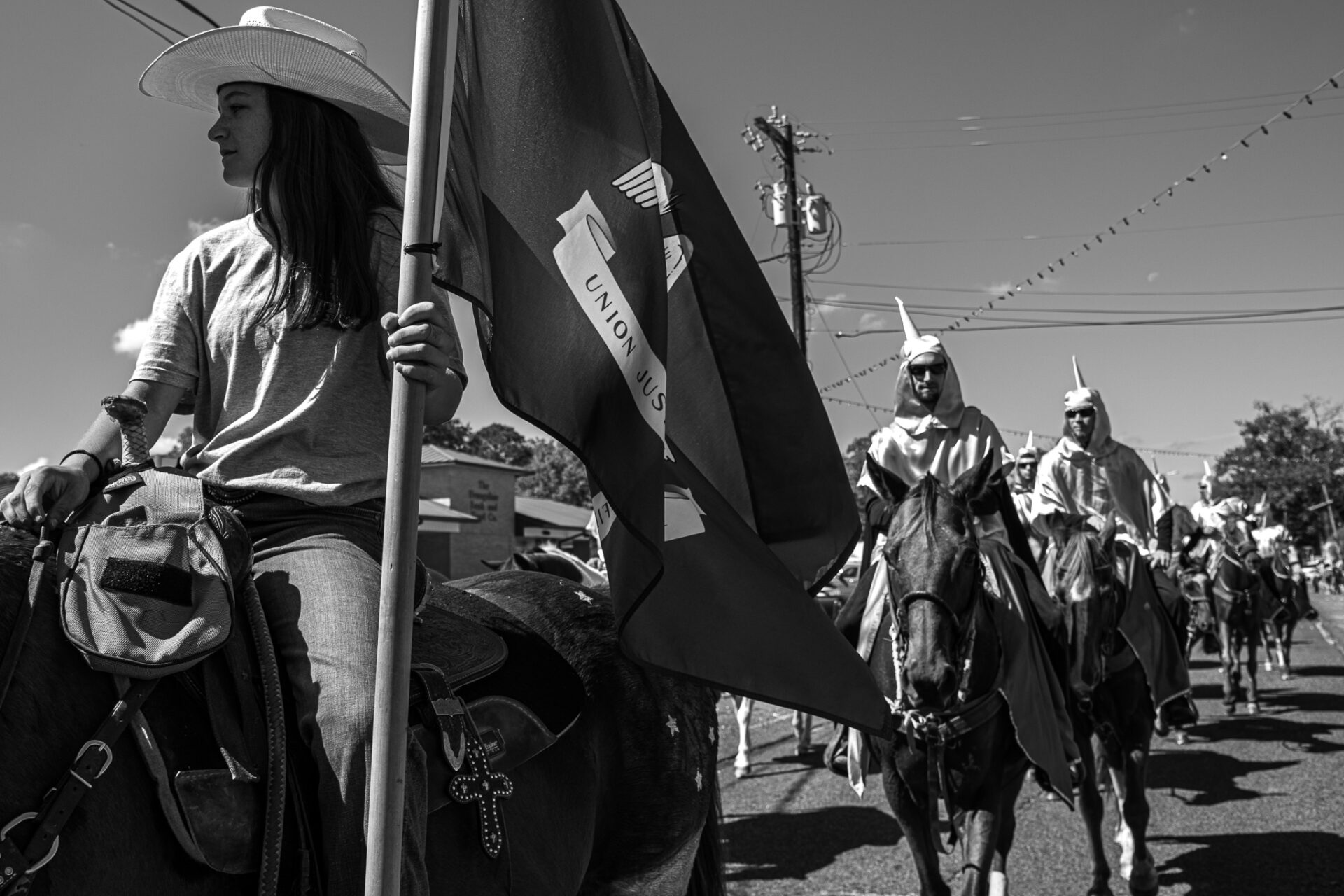
Tournoi competitors ride at the end of the annual Louisiana Cotton Festival parade in Ville Platte.
In Ville Platte, where locals know the names of tournoi winners like some Americans recall Super Bowl–winning quarterbacks, Toustou borrowed a horse and set out to qualify among the twenty riders allowed to compete. The ten who scored highest in the previous tournoi are welcomed automatically into the next competition. Some years, only ten riders compete to qualify, so all advance. In the 1980s, though, as many as thirty-five riders raced to qualify, while through the 1990s, twenty or more riders vied for those coveted spots. While numbers have dwindled, the tournoi remains mostly unchanged.
Last year, tournoi President Kent Saucier, a competitor in more than thirty races, let Toustou borrow a horse. “I tried her on the track for the first time—and with the lance for the first time—the day of the qualification,” Toustou said. She reached the first post, raised her 5.5-foot lance, and thought, “Oh, my god. This is really small.” (The inside diameter of the O-rings is 2.5 inches, a tenth of an inch smaller than the diameter of a twelve-ounce beverage can.) She missed that first ring, but in the race’s three rounds caught enough—and completed the course in requisite time—to qualify, becoming only the fourth woman in Tournoi history to do so.
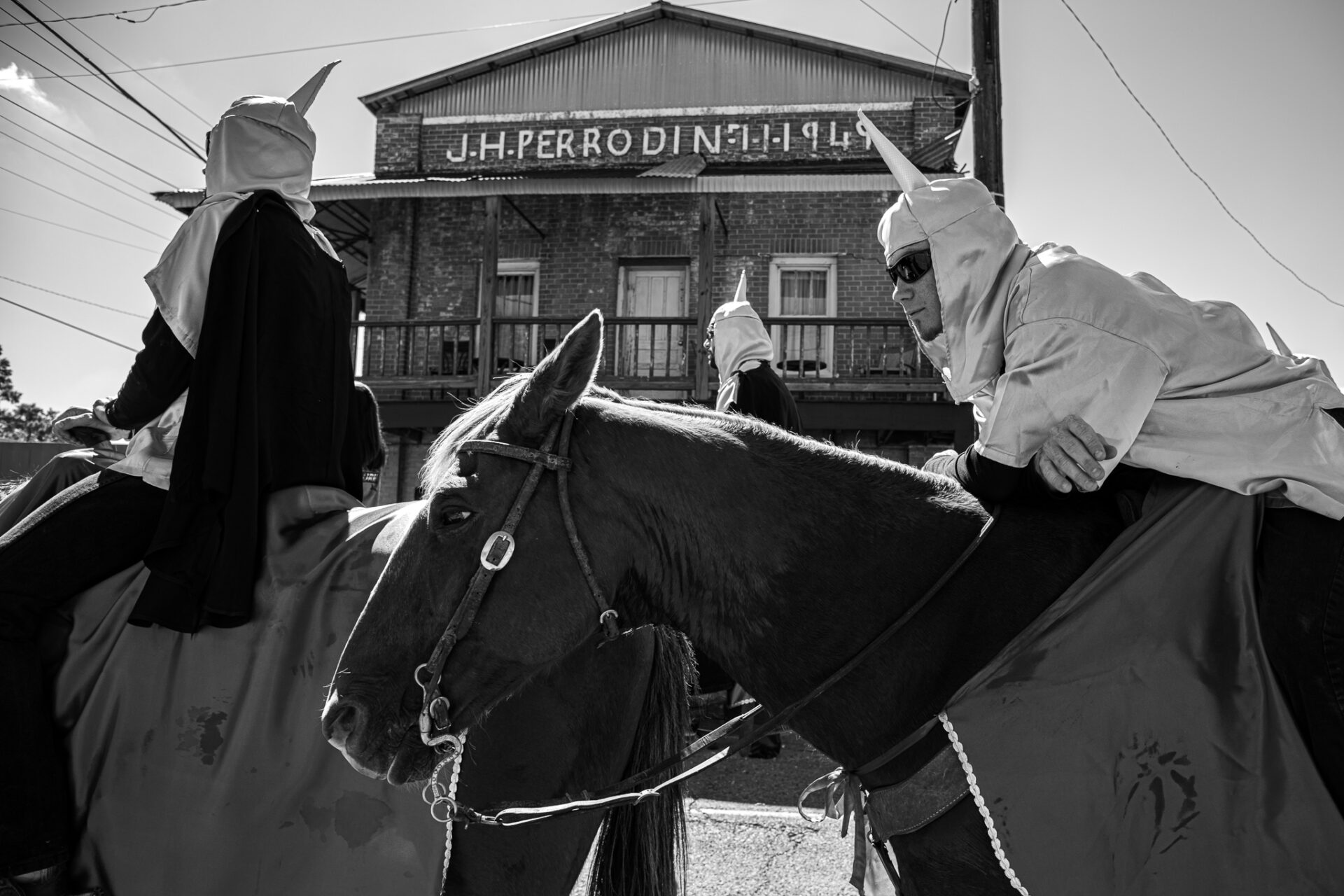
Marcus Guillory rests during the parade as it passes through downtown Ville Platte.
This year, Toustou and seventeen others, including Lisa Crane, the first woman to qualify, competed in the Tournoi de la Ville Platte, which follows the Cotton Festival. “Every ring you catch,” explained Francis Richard, ex-rider and current tournoi judge and timekeeper, “you’re defeating the enemies of cotton.” Each of the seven posts on the track bears the name of one of those enemies: flood, drought, silk, rayon, nylon, boll weevil, and bollworm.
In 2021 competitor Alex Haller caught 19 of 21 rings, with an average time of 12.2 seconds over 3 runs, to win the race and break Eric Guillory’s nine-year consecutive winning streak, the longest in tournoi history. “Ideally, you want the horse to put that ring on your shoulder,” he said, noting the importance of a well-trained horse. In 1991 competitor Kent Guillory became the first rider to catch all seven rings in all three rounds. A rider begins with 210 points. Deduct ten points for each ring caught, and average the time of each round, and the champion is the rider who finishes with the lowest total score.
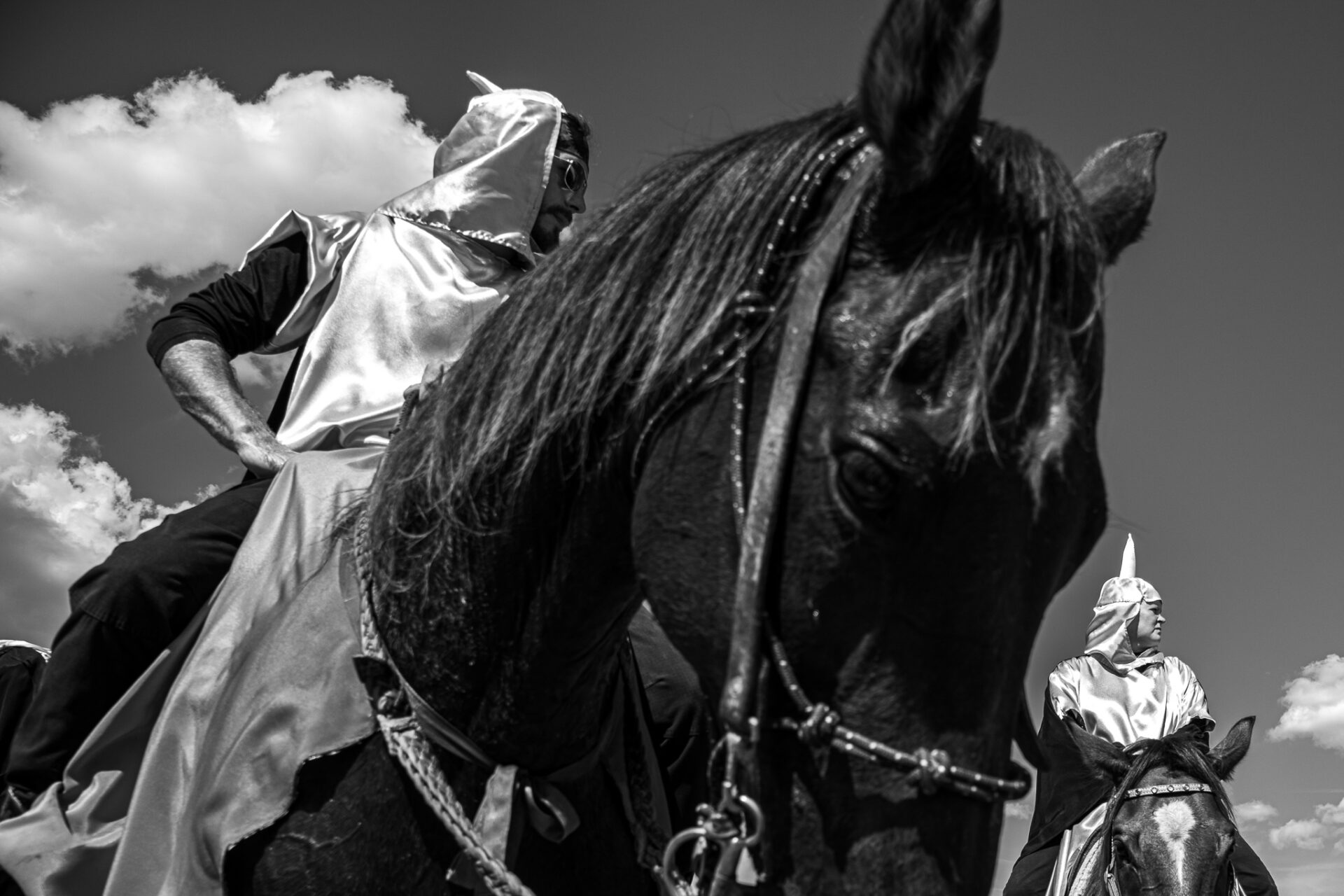
Eric Guillory and Lisa Crane await the start of the 2022 tournoi.
The demand for speed, accuracy, and athleticism, coupled with that iron-tipped lance, means that an air of danger permeates the race. Riders trade stories of risk and injury. One year Kent Guillory’s horse stubbed a hoof on the track and lost her footing. “It felt like she had been shot,” he said. His trouble had only just begun. The hat on his tournoi uniform shifted after he leapt from the horse. With his view of the horse’s position obscured by the hat, he worried she would crush him. Guillory hit the ground and saw blood behind his mask. Later, in the ambulance, he learned another detail: after his horse fell, she stood up, got back on the track, and finished without him.
Marcus Guillory had a similar experience in 2017 when the elevated dirt track collapsed. He wasn’t able to leap from the horse in time. His left knee hyperextended, and he broke his collarbone. “My whole family did this [the tournoi], back to my grandfather,” he said, grinning as he added the next detail: “I caught that ring as I was going down.”
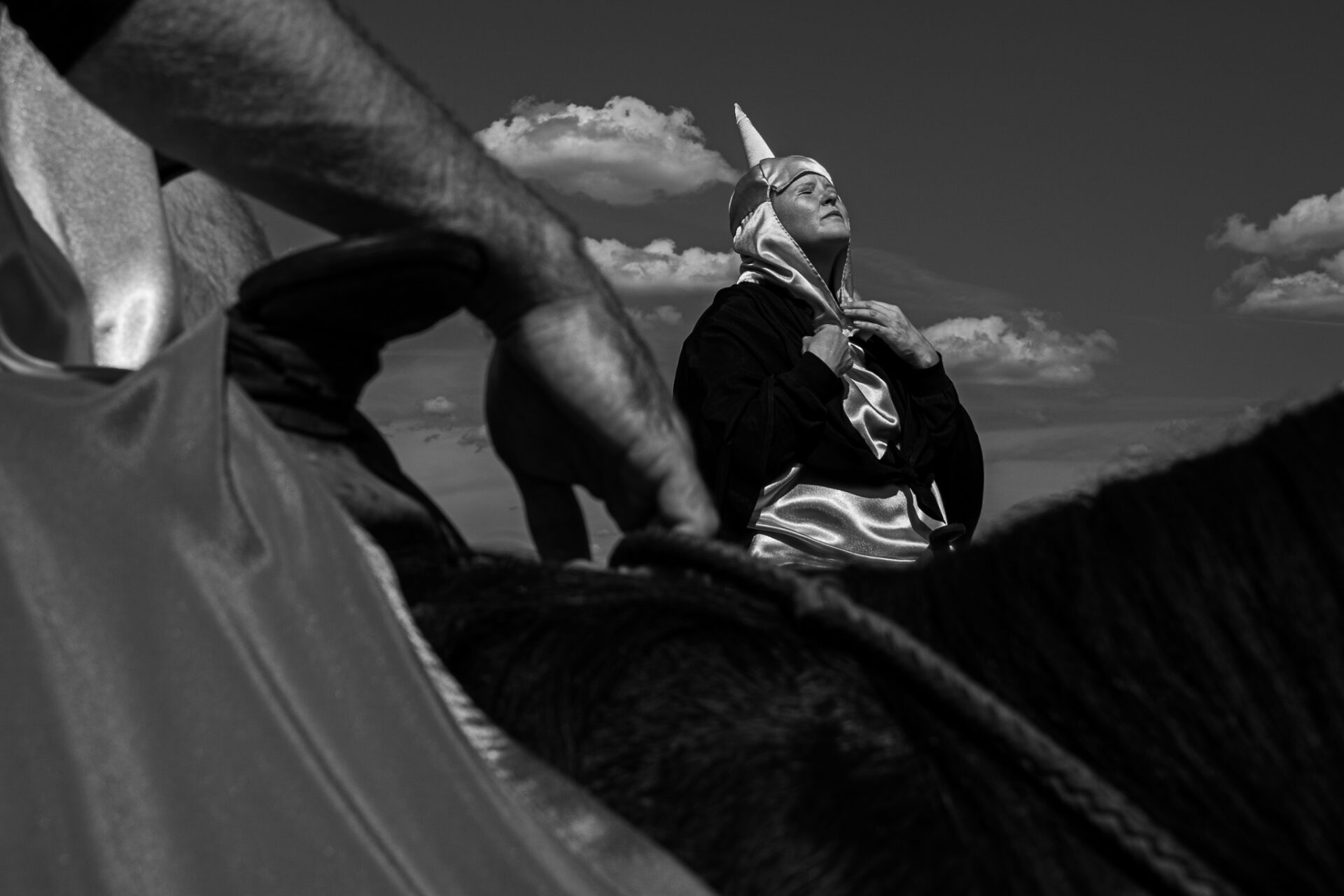
Lisa Crane, the first woman to qualify for the Tournoi de la Ville Platte, adjusts her uniform before the first round.
Little about the race has changed, including the family names of many winners, among them Soileau, Fontenot, and Guillory. There are now electronic timing clocks at the first and final posts. The tips of the lances have been adjusted. Once curved (“They looked like a witch’s nose,” said Saucier) and made of copper or brass, they are now straight and iron, machine made, ensuring that the ring doesn’t damage the tip. Riders know the weight and balance of the two dozen lances and select their preference before each round. “If you bend too far to the right, you catch that ring around your eye,” said Steve Guillory. “The next day you look like a racoon. When you miss the ring, the lance can hit the pole. Then the lance comes back at you. We got some get teeth knocked out of their mouth.”
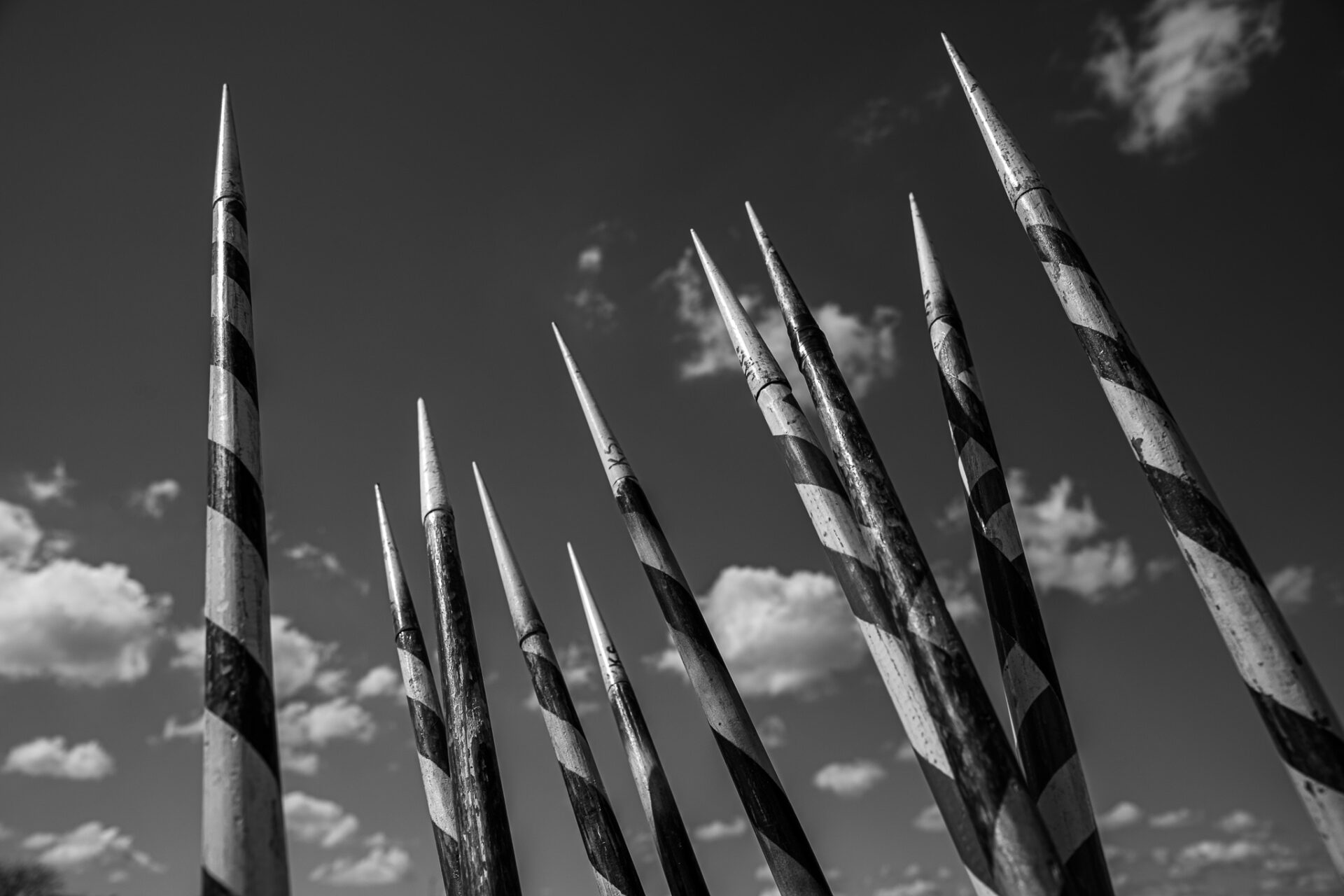
Before each of the three rounds, riders select their preferred lance from a station set up in the center of the track, returning it between rounds.
In 2018 Cody Guillory became, at age thirty-four, the oldest rookie in tournoi history. “When my horse came off of number 7, I lost my left stirrup,” he said. “The horse bit right and hit the ruts and started stumbling. I jumped off. My leg stopped in the rut but my body kept going. My hipbone went through my pelvis.” Among the rider’s thoughts when the horse falls: toss the lance to avoid impalement.
The 2022 tournoi saw no injuries. John Ross Guillory won his first race with an average speed of 12.661 seconds, catching 7, 6, and 7 rings in the three rounds. In her second race, Toustou caught 12 rings total, finishing with an average time of 13.5 seconds, and received the Sportsmanship Award. Now in her final year of teaching in Louisiana, she plans to return to France. “The riders are my second family here,” she said. “I don’t know if I’ll ever stop feeling the adrenaline. I’ll bring the tournoi home from Ville Platte.”
Kevin Rabalais, a writer and photographer from Avoyelles Parish, teaches in the Department of English at Loyola University New Orleans.
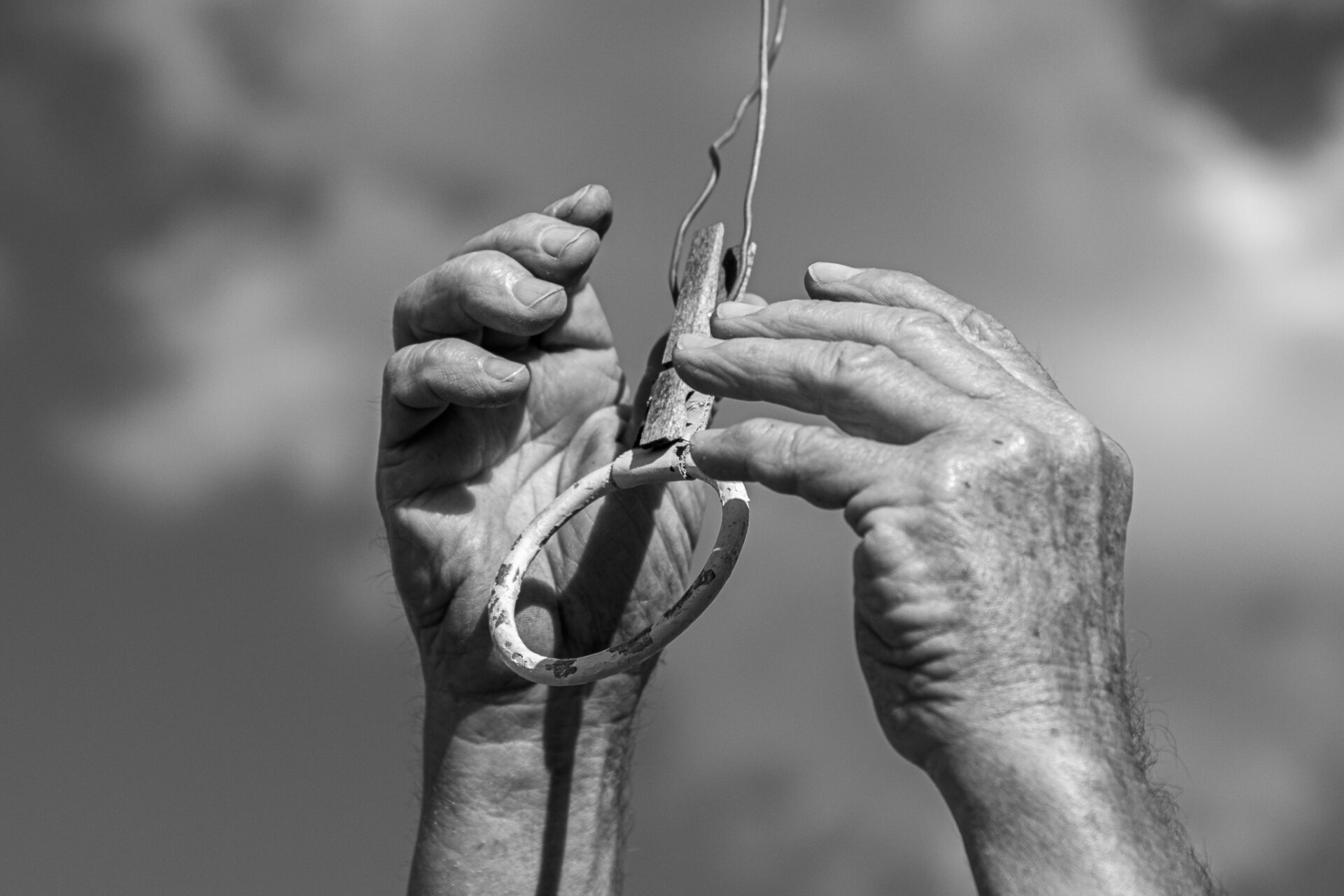
Tournoi riders attempt to catch O-rings the size of an average 12-ounce beverage can. Caught O-rings get replaced before the next competitor rides.
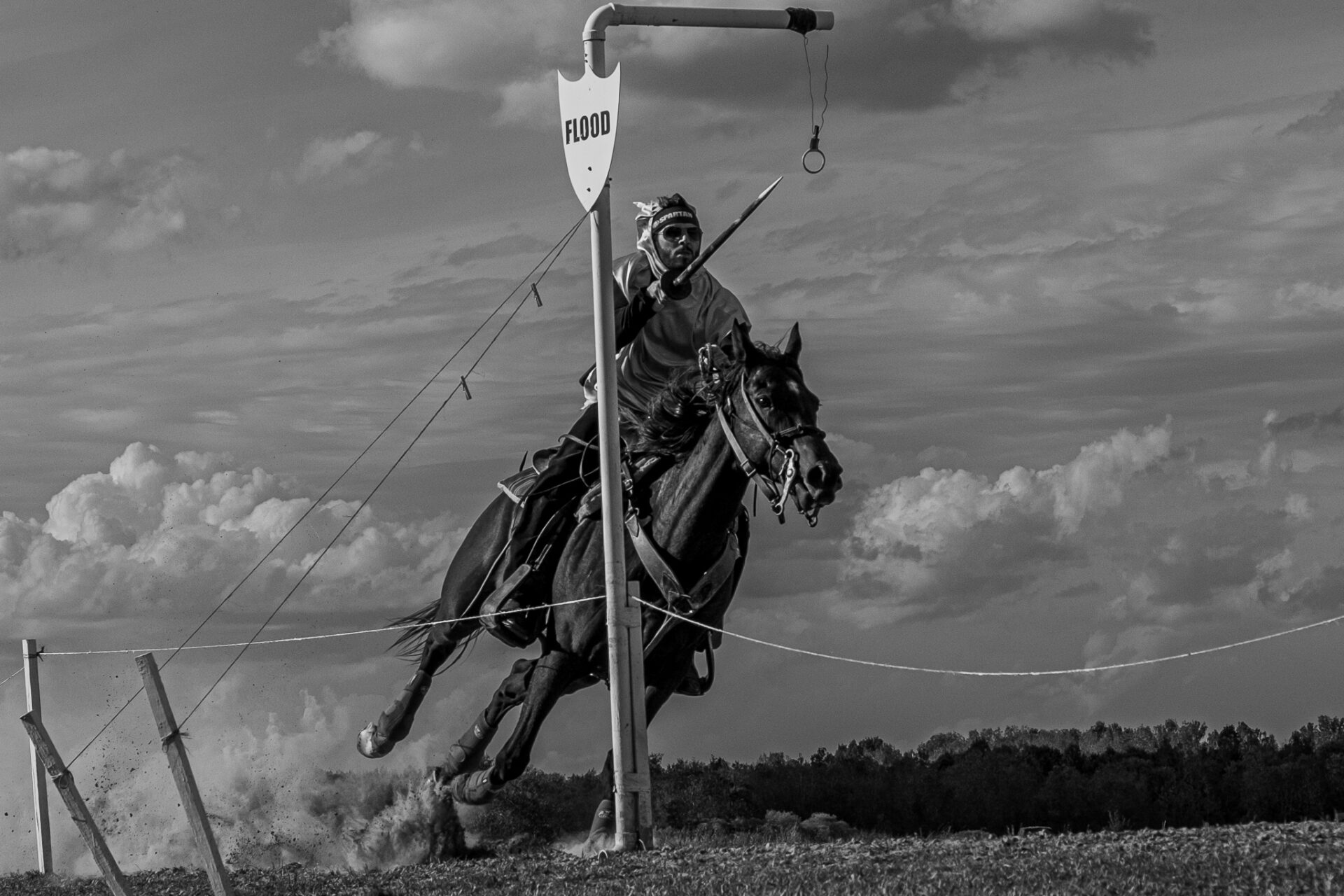
Eric Guillory prepares to catch a ring at the 2022 Tournoi de la Ville Platte.
